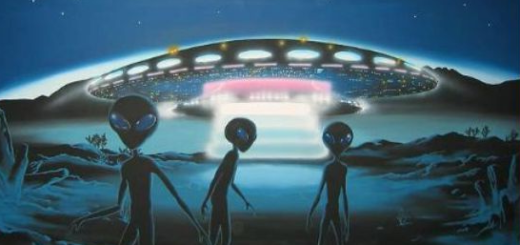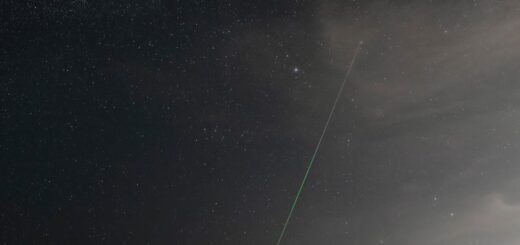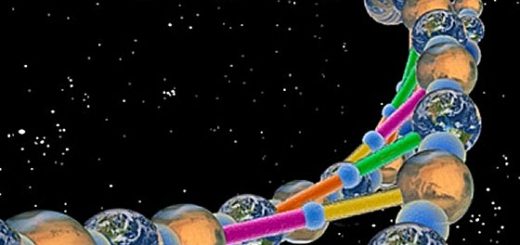Life on icy alien worlds may resemble creatures under submerged Hawaiian volcano

BELLEVUE, Wash. — What do a deep underwater volcano in Hawaii and Saturn’s moon have in common? Astrobiologists are hoping the answer to that question is life.
The Lō’ihi seamount off the southeastern coast of Hawaii’s Big Island could mimic the conditions astrobiologists believe exist on Saturn’s moon Enceladus.
If it does mirror Enceladus’ environment, the volcano could aid in the search for life on other planets, said Amy Smith, a postdoctoral investigator at the Woods Hole Oceanographic Institution, at a talk presented Monday (June 25) here at the annual Astrobiology Science Conference. [The 10 Strangest Places Where Life Is Found on Earth]
“There are lots of ocean worlds in our solar system,” Smith said. “Besides Earth, my favorite one is Enceladus.” Smith isn’t alone; Saturn’s sixth-largest known moon is one of the most popular spots among astrobiologists searching for life in the solar system.
More From LiveScience
The 10 Strangest Places Where Life Is Found on Earth
Enceladus
In Photos: Spooky Deep-Sea Creatures
Photos: Hawaii’s New Underwater Volcano
That is because scientists previously found evidence of hydrothermal vents – like those in Lō’ihi – and production of hydrogen, an element that life (as we know it) needs to survive. Hydrothermal vents are openings in the seafloor that spew out a mix of hot water and minerals. Last August and September, Smith and her team visited the site, where they sampled these jets and surrounding waters to understand what kind of life lives down there.
The Lō’ihi seamount, unlike most other underwater volcanoes, does not sit on a spreading ridge — a fracture zone at the bottom of the ocean where molten rock leaks out and creates new crust. And it’s the result of plate tectonics, which explains the rocky slabs that fit together like pieces of a jigsaw puzzle and cover Earth. As these plates move, they create all kinds of phenomena, from volcanic eruptions to mountain growth.
“We don’t expect for plate tectonics to exist on these other worlds,” Smith said. “So the conditions in Lō’ihi,” are probably more likely what we would find.” What’s more, this ice-covered mystery moon likely has similar temperatures and pressures to the Hawaiian underwater volcano. The temperatures of the hydrothermal vents at this site, at 86 to 104 degrees Fahrenheit (30 to 40 degrees Celsius) is not only possible on Enceladus, but low enough for life to exist, Smith told Live Science after the talk. The summit of Lō’ihi would have the same pressure as the seafloor of Enceladus, she said.
The summit of Lō’ihi is around 3,200 feet (1,000 meters) below the surface. Organisms living there don’t have the luxury of sunlight that can be used to fuel photosynthesis. Rather, life uses a process called chemosynthesis whereby they consume carbon dioxide to build their cells and grow.
“We don’t see very many typical organisms at this site,” Smith said. Perhaps, a couple of fish and a few shrimp, she added. This site is mainly dominated by mats of bacteria, typically Mariprofundus ferrooxydans.
The researchers’ preliminary results from the cruise, which haven’t yet been published in a peer-reviewed journal, show that these bacteria not only dominate the surface of Lō’ihi, but were also present in the jets from the hydrothermal vents. “This means the mats may extend below the surface and are present in the cracks and fissures of the rocks deeper down,” she said.
What’s more, they also visited the shoreline of the Kilauea volcano that had erupted a few months prior (last May) and found that the same microbial mats settled down on the cooling lava as were found at depths of 2,083 feet (635 meters) in the water. These bacteria use oxygen to create energy. However, “whether or not there’s oxygen on some of these other ocean worlds is up for debate,” Smith said. “So were not really sure if this is a good location or not based on that.”
The researchers’ analysis of older samples, which also haven’t yet been published show that organisms have genes that could aid them in fixing carbon — an important part of energy production — without using oxygen, she said.
“I think it is a good analog for both scientific exploration but also for technology testing [in] realistic not-easy-to-reach conditions,” said Petra Schwendner, a postdoctoral fellow at the University of Florida who was not a part of the research, but who attended the talk. “Saturn’s moon Enceladus is thought to have similar environmental conditions.”
Ann Cook, an associate professor in the School of Earth Sciences at The Ohio State University who was also not a part of the study but who attended the talk, agreed. “To me, it seemed like a good option for understanding just how microbes might interact in any type of venting system,” she said.



 Creators of mankind
Creators of mankind Description of “Tall white aliens”
Description of “Tall white aliens” Where they came from?
Where they came from? About hostile civilizations
About hostile civilizations The war for the Earth
The war for the Earth “Tall white aliens” about eternal life
“Tall white aliens” about eternal life Video: “Nordic aliens”
Video: “Nordic aliens” Aliens
Aliens Alien encounters
Alien encounters The aliens base
The aliens base UFO
UFO Technology UFO
Technology UFO Underground civilization
Underground civilization Ancient alien artifacts
Ancient alien artifacts Military and UFO
Military and UFO Mysteries and hypotheses
Mysteries and hypotheses Scientific facts
Scientific facts


















